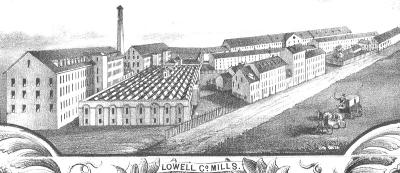Imagine a world where every single person in a factory was responsible for crafting a complete product, from start to finish. It’s hard to picture, isn’t it? In that world, the creation of a single item might take days, weeks, or even months. This is the world that existed before the Industrial Revolution, a world where productivity was limited by the individual’s ability to master every intricate step of the process. But then came the division of labor, a revolutionary concept that fundamentally transformed the way we work and fueled the explosive growth of factories.

Image: www.mrallsophistory.com
The division of labor isn’t simply about splitting up tasks; it’s about harnessing the power of specialization. By assigning specific responsibilities to individual workers, it unlocks a unique potential for efficiency. The worker isn’t burdened with mastering every stage of production, allowing them to focus their energy and expertise on one specific area. Suddenly, individuals can become experts in their niche, leading to a dramatic increase in skill and speed. As we explore this remarkable concept, let’s delve into the historical context, the economic principles at play, and the lasting impact of the division of labor on the world we know today.
A Glimpse into History: The Birth of Factory Systems
Before factories sprang up across the landscape, the world was a place of cottage industries and artisanal production. Imagine a skilled cobbler, meticulously crafting each pair of shoes by hand. He would be responsible for every stage of the process, from selecting the leather to stitching the final seam. This method, while ensuring quality, was slow and laborious.
The dawn of the Industrial Revolution in the 18th century ushered in a new era. Inventions like the steam engine and the spinning jenny revolutionized manufacturing, allowing for mass production. Yet, these innovations alone wouldn’t have been enough to create the thriving factories that were to come. The key to unlocking true industrial might lay in the division of labor, a principle that had been championed by economists like Adam Smith decades before.
The Principles of Specialization: Unlocking Productivity
Adam Smith, in his groundbreaking work “The Wealth of Nations,” laid out the fundamental principles of the division of labor. He argued that by breaking down a complex task into smaller, more manageable units, workers could become more efficient and productive. By focusing their time and energy on a single task, they could refine their skills, improve their speed, and ultimately produce more goods than they ever could working individually.
Beyond mere efficiency, the division of labor also paved the way for the rise of factories. By concentrating workers under one roof, businesses could streamline production, coordinate tasks, and implement quality control measures more effectively. This concentration of labor also enabled the use of specialized equipment, further augmenting productivity.
Beyond the Factory Floor: The Ripple Effect of Specialization
The division of labor wasn’t confined to the factory floor. It permeated society, impacting every aspect of our lives. From the assembly lines of automobile manufacturers to the intricate network of specialists in healthcare, the concept of dividing tasks according to expertise has become a defining characteristic of modern-day society.
Just as the division of labor transformed industries, it also reshaped the landscape of education and training. The demand for specialized skills fueled the growth of vocational schools and technical colleges, providing individuals with the tailored knowledge they needed to thrive in a world of specialized labor.

Image: www.ducksters.com
The Unforeseen Consequences: A Balancing Act
While the division of labor has undoubtedly led to incredible progress, it also comes with its share of challenges. Critics point to the alienation and monotony that some workers may experience by performing repetitive tasks day after day. This can lead to a lack of job satisfaction and, in some cases, a feeling of being disconnected from the final product.
However, proponents argue that the benefits of increased productivity and lower costs outweigh these concerns. They emphasize that the division of labor has led to a dramatic increase in the quality and affordability of goods, ultimately improving the quality of life for consumers.
How Did The Division Of Labor Make Factories More Productive
The Future of Work: Embracing the Balancing Act
As technology continues to evolve, the division of labor is also undergoing a transformation. Automation is steadily taking over repetitive tasks, freeing up human workers to focus on more complex and creative endeavors. This shift raises important questions about the future of work and the need to ensure that workers are equipped with the skills and opportunities to thrive in a rapidly changing world.
The division of labor remains a powerful force shaping our world, a concept that has driven progress and prosperity. While it’s not without its complexities, its enduring impact on our society is undeniable. As we navigate the challenges and opportunities of the future, it’s essential to embrace the power of specialization while finding a balance that promotes both efficiency and human fulfillment.






